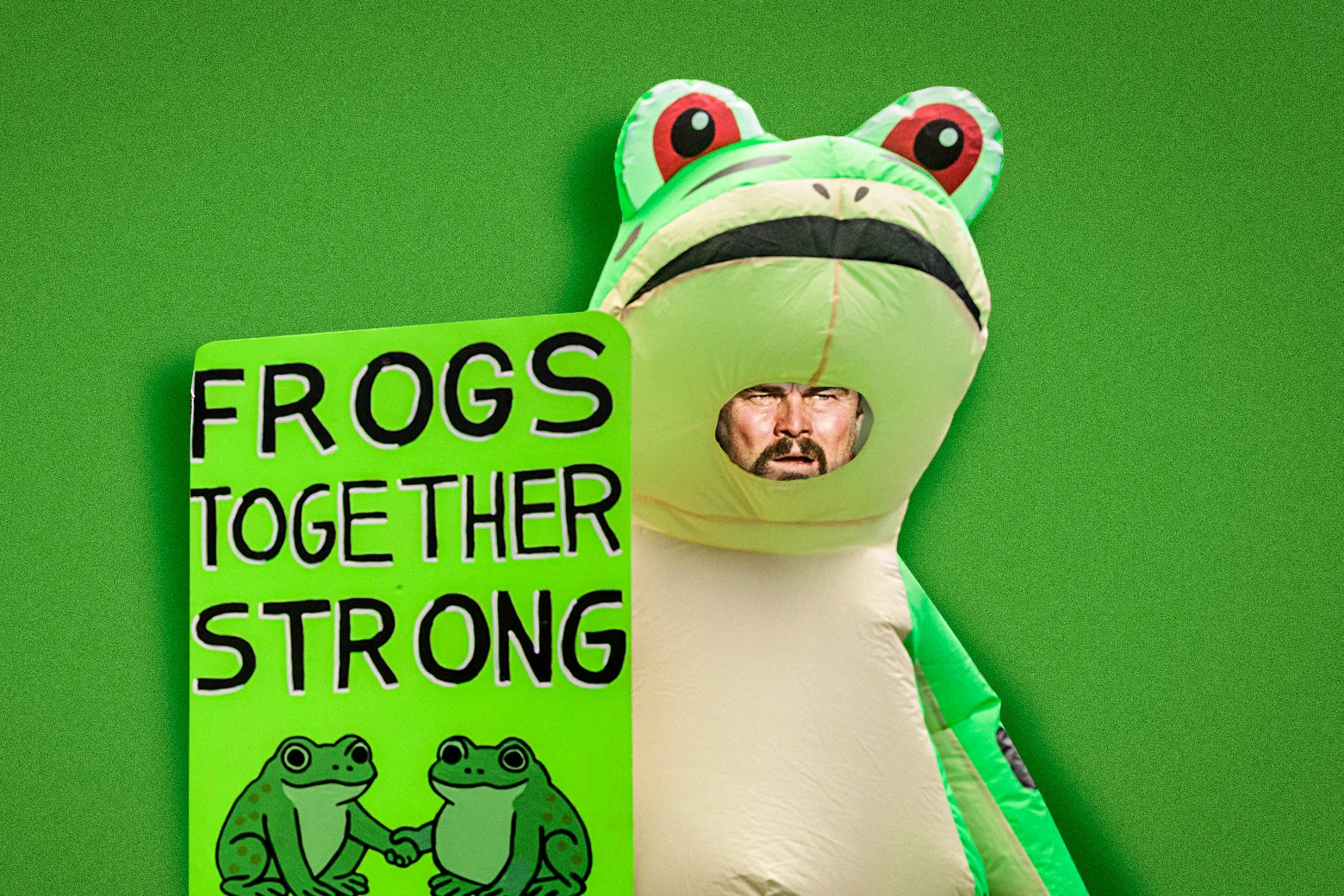Copyright Slate

Last weekend’s No Kings demonstrations—by some estimates, the largest single-day protest in more than 50 years—were filled with signs and slogans expressing just about every anti-Trump opinion imaginable. There were references to the Declaration of Independence and the New Testament, placards crammed with tiny type alleging vast pedophile conspiracies while demanding the release of the Epstein files, and, at least in Texas, T-shirts and posters reading “Chinga tu MAGA.” At the demo I stopped by, some enterprising soul had even gotten up early to plant signs promoting freedom through cryptocurrency. The array of ideas verged on ideological cacophony—there was even someone protesting the ineffectiveness of the No Kings protests—but the point wasn’t to send any singular message, beyond general opposition to the massive rightward lurch of the last 10 months. In a way, it was protest for protest’s sake, for the sake of being surrounded by others who, whatever their individual agendas, could agree on the notion that the way things are going is not OK, and neither is staying silent about it. The point was to be there, to be seen—a point that somehow found its purest and most infectious expression in the form of an inflatable frog. In the past couple of weeks, images of protestors in inflatable frog costumes have become a defining image of the anti-Trump resistance, along with comrades clad as unicorns, chickens, even the odd 5-foot penis. The people inside those outfits were sometimes quite eloquent about their reasons for turning out, but the most potent message was the one sent simply by their presence. Seth Todd, the original Portland Frog, came out to oppose Immigration and Customs Enforcement detentions and deportations, but the heart of the movement that the 24-year-old inadvertently started was, as Todd told an interviewer, “looking ridiculous.” In the face of the administration’s claims that federal agents carrying out their lawful duties were facing off against mobs of violent Antifa thugs, Todd and others showed up in a guise that was not only nonthreatening but absurd—as preposterous as the nonexistent insurrection Trump was federalizing troops to quell. Todd was just hoping to “make the president and the feds look dumb,” he explained. “There was no higher point beyond that.” While some have cast the proliferation of Portland Frogs as a reclamation of a symbol once owned by the racist alt-right, the true strength of Portland Frog is that it has no purpose beyond being Portland Frog. Unlike No Kings’ welter of overlapping signifiers, Portland Frog just is. The Soviet-born writer Gary Shteyngart linked it to the tradition of “tactical frivolity” that goes back to at least the “Yippies” of the 1960s, but the Verge’s Sarah Jeong linked it to a more contemporary phenomenon: the shitpost. The shitpost’s purpose is not to create meaning but to attack it, to mock the idea of meaning itself. What are you getting so worked up about? It’s just a frog. Portland Frog doesn’t just make opposition look more harmless to the powers that be. It makes it feel less threatening to the people who are still inside, wanting to be part of the movement but unsure whether it’s safe, or whether they belong. Dressing up in a silly costume makes protest look fun. The images of mass dissent that circulate in our culture tend to be characterized by a sense of danger or alienation; think of the civil rights marchers beaten and killed in Selma, or the scattered freakshow of Eddington’s Black Lives Matter demonstrations. But while those images are based in truth, they’re only part of the picture. Which is why, as I’ve been thinking about Portland Frog, my mind keeps turning to Bob Ferguson. The simplest take on One Battle After Another’s shambling dissident is that he’s an aimless clown, getting high to watch The Battle of Algiers while the real work of political change goes on elsewhere. But a closer reading reveals that Bob does play an important role in the struggle, if not the one we’re accustomed to seeing inhabited by white male protagonists played by major movie stars. In the movie’s opening sequence, a gun-toting group led by Bob’s militant lover, Perfidia Beverly Hills (Teyana Taylor), liberates an immigrant detention center, while Bob stays outside to set off fireworks. It’s a silly, even emasculating task, the kind you’d give to someone who’s no good in a tight situation—a characterization that Bob’s behavior throughout the rest of the movie bears out. But Bob’s skills do make a difference. The fireworks turn armed revolt into celebratory spectacle, insurrection into political theater. Leonardo DiCaprio does the same thing for One Battle After Another. Paul Thomas Anderson’s movie is about anti-government resistance, armed and otherwise: The French 75, the group to which Bob belongs in the movie’s first timeframe, robs banks and blows up buildings; the unnamed group led by Sensei Sergio St. Carlos (Benicio Del Toro) in the movie’s second part shelters immigrants. Bob, meanwhile, just floats alongside them, army-crawling in his bathrobe while others get things done. Despite the fact that he’s ostensibly the movie’s main character, he functions as comic relief, a purposeful misdirection from subject matter that under different circumstances might be seen as incendiary. (The influence of Anderson’s idol Robert Altman hasn’t always been directly apparent in his movies, but DiCaprio’s clueless stoner feels like a dead ringer for Elliott Gould’s half-baked detective in The Long Goodbye—he’s just as much Philip Marlowe as he is the Dude.) DiCaprio’s performance is such a delightfully sustained piece of gonzo physical comedy that it took weeks for most right-wing media outlets to notice that a major American studio had released a movie that presents a sympathetic (albeit nuanced) portrait of domestic terrorism. One Battle is, I think, not a political movie so much as a movie about politics, one that embodies the feeling of what it’s like to exist in a world controlled by extremist interests that calls for an equally extreme response. People like Ben Shapiro aren’t wrong to be outraged by the suggestion, however wrapped in satirical overkill, that the United States is controlled by a secret society of white supremacists. It’s an outrageous idea, but we live in outrageous times. (Imagine how upset Shapiro might have been if Anderson’s movie showed the president of the United States posting a video of himself dumping tons of liquid shit on American citizens!) Bob’s hapless flailing allows the movie to pass off its most incendiary images—including the image of Black women wielding automatic weapons and sexually humiliating white male military officers—as tongue-in-cheek, not quite a joke, but not to be taken too seriously. Like Bob Ferguson, Portland Frog isn’t meant to be the vanguard of a political movement. But he makes what might otherwise seem dangerous feel approachable, even appealing. Bob and his amphibian counterpart won’t get the job done, but they clear a place for others to do it, with a song, or a croak, in their hearts.



